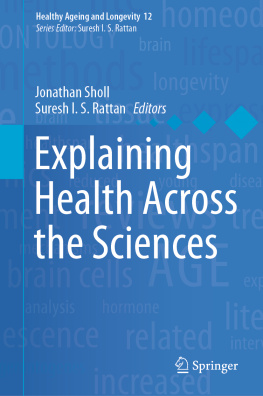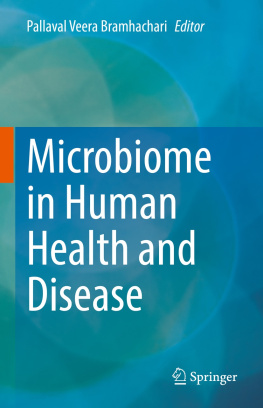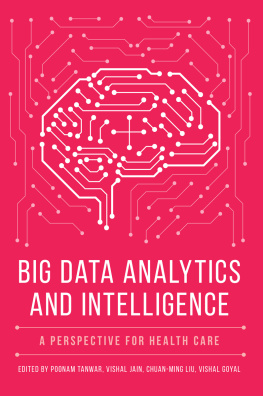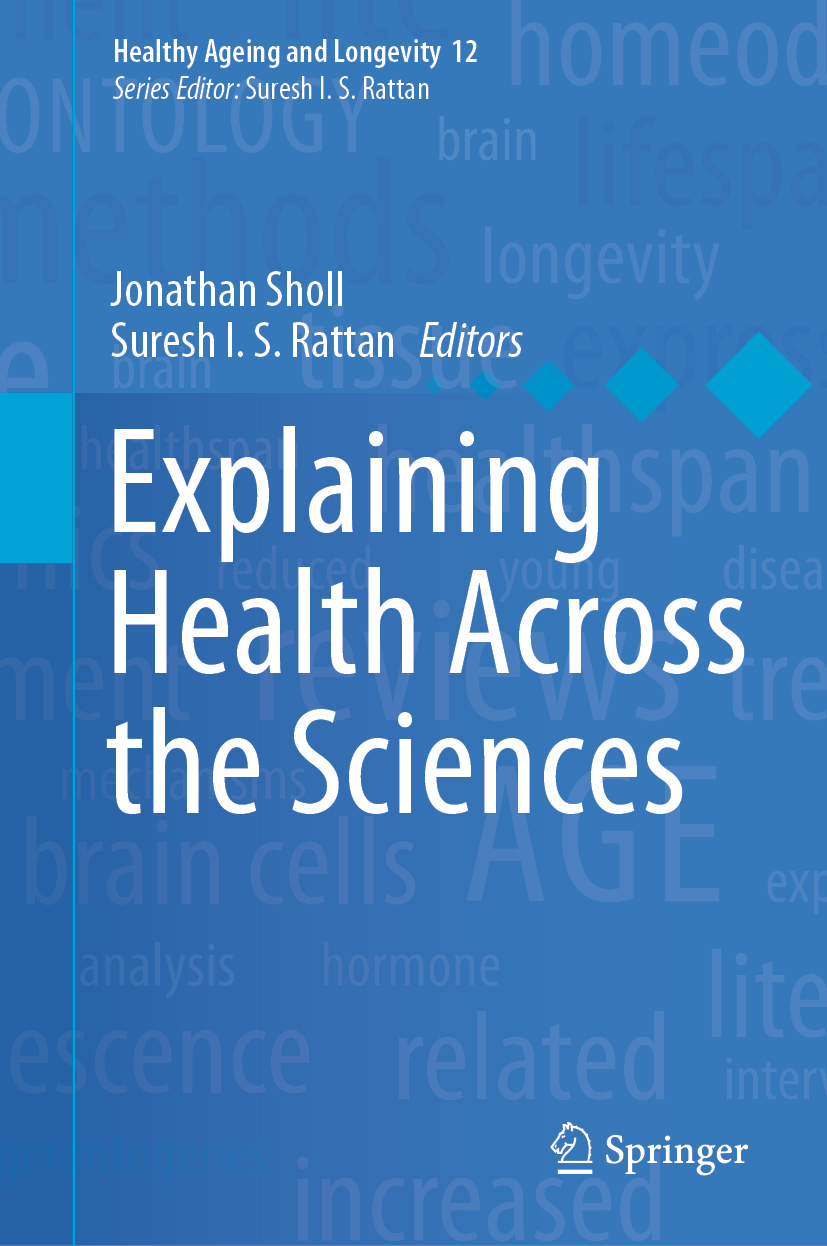Volume 12
Healthy Ageing and Longevity
Series Editor
Suresh I. S. Rattan
Department of Molecular Biology and Genetics, Aarhus University, Aarhus, Denmark
Rapidly changing demographics worldwide towards increased proportion of the elderly in the population and increased life-expectancy have brought the issues, such as why we grow old, how we grow old, how long can we live, how to maintain health, how to prevent and treat diseases in old age, what are the future perspectives for healthy ageing and longevity and so on, in the centre stage of scientific, social, political, and economic arena. Although the descriptive aspects of ageing are now well established at the level of species, populations, individuals, and within an individual at the tissue, cell and molecular levels, the implications of such detailed understanding with respect to the aim of achieving healthy ageing and longevity are ever-changing and challenging issues. This continuing success of gerontology, and especially of biogerontology, is attracting the attention of both the well established academicians and the younger generation of students and researchers in biology, medicine, bioinformatics, bioeconomy, sports science, and nutritional sciences, along with sociologists, psychologists, politicians, public health experts, and health-care industry including cosmeceutical-, food-, and lifestyle-industry. Books in this series will cover the topics related to the issues of healthy ageing and longevity. This series will provide not only the exhaustive reviews of the established body of knowledge, but also will give a critical evaluation of the ongoing research and development with respect to theoretical and evidence-based practical and ethical aspects of interventions towards maintaining, recovering and enhancing health and longevity.
More information about this series at http://www.springer.com/series/13277
Editors
Jonathan Sholl and Suresh I. S. Rattan
Explaining Health Across the Sciences
1st ed. 2020
Editors
Jonathan Sholl
Philosophy and History of Ideas, Aarhus University, Aarhus, Denmark
Suresh I. S. Rattan
Department of Molecular Biology and Genetics, Aarhus University, Aarhus, Denmark
ISSN 2199-9007 e-ISSN 2199-9015
Healthy Ageing and Longevity
ISBN 978-3-030-52662-7 e-ISBN 978-3-030-52663-4
https://doi.org/10.1007/978-3-030-52663-4
Springer Nature Switzerland AG 2020
This work is subject to copyright. All rights are reserved by the Publisher, whether the whole or part of the material is concerned, specifically the rights of translation, reprinting, reuse of illustrations, recitation, broadcasting, reproduction on microfilms or in any other physical way, and transmission or information storage and retrieval, electronic adaptation, computer software, or by similar or dissimilar methodology now known or hereafter developed.
The use of general descriptive names, registered names, trademarks, service marks, etc. in this publication does not imply, even in the absence of a specific statement, that such names are exempt from the relevant protective laws and regulations and therefore free for general use.
The publisher, the authors and the editors are safe to assume that the advice and information in this book are believed to be true and accurate at the date of publication. Neither the publisher nor the authors or the editors give a warranty, expressed or implied, with respect to the material contained herein or for any errors or omissions that may have been made. The publisher remains neutral with regard to jurisdictional claims in published maps and institutional affiliations.
This Springer imprint is published by the registered company Springer Nature Switzerland AG
The registered company address is: Gewerbestrasse 11, 6330 Cham, Switzerland
Preface
We all have some notion of what a healthy person is or have felt more or less healthy ourselves. And yet, there has been an endless debate about what exactly health is and how it should be defined. Perhaps part of the difficulty is that most standard textbook definitions of health define it in terms of an absence: the absence of disease. As a result, it seems quite difficult to have a science of health, or for health to be considered a scientific concept, since it is supposedly tracking what is not present. On the other hand, what is perhaps the most well-known definition of health outside of the clinical realm comes from the World Health Organization: health is a state of complete physical, mental, and social well-being, and not merely the absence of disease or infirmity. This at least gets around the issue of defining health in negative terms, but it leaves the concept horribly vague and difficult to quantify scientifically. Is anyone ever completely healthy?
Is this all there is to be said about health? Should we just abandon the concept entirely? Perhaps we have not been asking the right questions. When the medical sciences are investigating the phenomenon we call health, are they not also tracking the presence of some properties, processes or abilities? Wouldnt this latter question force us to clarify what the object of the health sciences actually is? These questions, among many others, were in our minds as we set out to conceive of an interdisciplinary book on health. Through a series of conversations between usone a philosopher of medicine and the other a biogerontologistwe narrowed down how we might tackle this problem of understanding and even explaining health by bringing together as many different perspectives as we could. We wanted to transport the interdisciplinary conversations we were having into the context of an edited volume where experts in their fields, be they scientific or philosophical, would be challenged to reflect on the implications of their object of study for how to understand and explain health. Now, this is not a question that is often asked outside of the more likely setting of philosophical discussions, and so it required some nudging on our behalf to push the contributors out of their comfort zones. The result is also an interdisciplinary one, though less in terms of collaborations on a given topic and more in terms of the overall composition of the present volume with its mix of scientific and philosophical contributions. This mix produced interesting challenges and discoveries due to the different expectations of writing in science and in philosophy. We hope that the final composition provides the reader with a diversity of perspectives that complement one another despite their different methods, jargon, topics, and presentation styles.
The volume has been divided into three parts (and a conclusion): one on explaining health from within specific disciplines, one exploring health from the perspective of a bodily system, part, function, or the environment in which organisms are found, and the final part looking at more clinical or practical perspectives. Part I develops the more general evolutionary, biological, and philosophical dimensions of health as discussed in the respective disciplines. Here, the aim is to take a birds-eye view of health from within an entire field, whether it is evolutionary, molecular or systems biology, or debates within philosophy, and to try to unearth some general insights. The philosophical contributions focus on a range of issues, such as whether there can be a general theory of health and how this pertains to interdisciplinary fields, what philosophers have to say about mental health, and even the relation between healthy aging and authenticity. By and large, the issues raised in these chapters are not ethical ones, but rather issues related to the concepts and models used in the health sciences.









